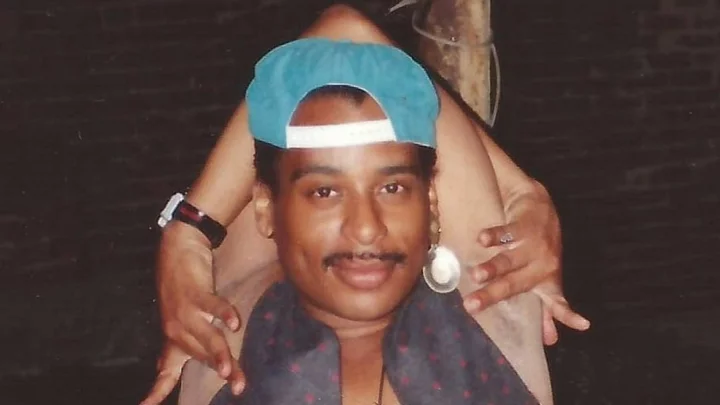Although he might not be a household name, Willi Ninja—born William Roscoe Leake in New Hyde Park, New York, on April 12, 1961—was a highly influential American dancer, choreographer, and model from the mid 1980s through the mid-‘00s.
His fierce and gender-fluid style had a pioneering influence on music and fashion, which still persists to this day. Not only that, but he also created spaces for Black LGBTQ+ communities to better thrive and flourish. Below are a few more facts about the iconic performer.
1. Ninja was the “Grandfather of Vogue.”
Although Black drag queens created the dance form in Harlem during the ‘60s, Ninja is considered the “Grandfather of Vogue” because he popularized it across the country and overseas, thanks to his appearance in the 1990 documentary, Paris Is Burning.
The dance form, which features highly stylized, model-like angular poses and exaggerated choreography, rose from the underground LGBTQ+ Black and Latino ballroom scene during the late ‘80s and early ‘90s. It was named after the magazine Vogue because “some of the movements of the dance are also the same as the poses inside the magazine,” Ninja explained in the documentary.
“Voguing came from shade,” he added. “Because it was a dance that two people did because they didn’t like each other. Instead of fighting, you would dance it out on the dance floor and whoever did the better moves was throwing the best shade, basically.”
2. He shot to fame thanks to Paris Is Burning.
In 1990, Ninja gained celebrity status after he was featured in director Jennie Livingston’s award-winning documentary, Paris Is Burning. The 1990 film is about the “golden age” of New York City’s drag ballroom scene during the late ‘80s.
After the success of the documentary, Ninja traveled the world to teach his style of Vogue to other dancers and fashion models. Meanwhile, the Library of Congress’s National Film Registry selected Paris Is Burning for preservation in 2016, for being “culturally, historically, or aesthetically significant.”
In addition, he also appeared in Wigstock: The Movie (1995), Check Your Body At The Door (2012), and other documentaries.
3. Ninja created his own ballroom house.
In 1982, Ninja helped create the House of Ninja ballroom house, acting as “mother” to a group of LGBTQ+ adopted “children” in New York City. The name Ninja comes from his love of martial arts culture, Olympic gymnasts, and choreography.
“It’s a powerful name,” he told The Observer in 2004. “And a powerful word, and it’s almost like an assassin: When they strike, they strike hard. Then they disappear, and you don’t know if they’re going to come back again … and when they do, are they going to come back just as fierce?”
Currently, the House of Ninja—which is known for its inclusive membership of all races and sexual orientations—has chapters in multiple countries, such as Italy, Brazil, Japan, Russia, and others, while it boasts more than 200 members.
4. He collaborated with an award-winning film director and LGBTQ+ rights activist.
In 1989, Ninja appeared in director Marlon Riggs’s landmark documentary Tongues Untied, which is about Black gay sexuality in America; it aired on PBS as part of its POV series. The documentary was originally met with controversy, as some contemporary detractors considered the film pornographic and objected to Riggs’s use of funds from the National Endowment for the Arts to produce it. However, in 2022, the documentary was selected for preservation by the National Film Registry, on the grounds that it is “culturally, historically, or aesthetically significant.”
A few years later in 1991, Ninja appeared in another Riggs film, Anthem—a short that celebrates Black and gay pride during the AIDS epidemic. Both films are available in The Signifyin’ Works of Marlon Riggs boxed set from the Criterion Collection.
5. Ninja was a model who also coached Naomi Campbell and Iman on how to walk the runway.
Over the years, Ninja used his legendary swagger and unforgettable posing style for various fashion houses. Designers like Jean-Paul Gaultier, Thierry Mugler, Chanel, Karl Lagerfeld, and others used Ninja as a runway model to show off new collections.
He also trained supermodels—including Naomi Campbell, Tyra Banks, Christy Turlington, and Iman—on how to sashay down a runway. “I’m the walking man,” Ninja told The Observer in 2004.
Or, as one model booker who commissioned Ninja to train models put it: “He’s the guy. He’s the dude ... It’s kind of cool to watch [the models] walk down on their own in the beginning and then to see him transform them.”
6. He also appeared in multiple popular music videos.
In May 1989, Ninja was prominently featured in Malcolm McLaren’s music video for the hit song “Deep in Vogue,” which predates Madonna’s song “Vogue” by a year. “Deep in Vogue” would go on to top the Billboard dance charts in July 1989.
Ninja also appeared in the music video “I Can’t Get No Sleep” from Masters At Work featuring India, and he served as a dancer in two Janet Jackson music videos, including for “Alright” and “Escapade” from Janet Jackson’s Rhythm Nation 1814.
7. Ninja was a fierce advocate For HIV/AIDS awareness.
Ninja was one of the earliest advocates of HIV/AIDS awareness in the queer community during the ‘80s. He was diagnosed with HIV in 2003 and later died due to AIDS-related heart failure on September 2, 2006, at age 45.
Currently, the House of Ninja continues performing at drag balls to advocate for HIV/AIDS awareness, and on Friday, June 9, 2023, Ninja was honored by Google when they created a Google Doodle in his likeness.
This article was originally published on www.mentalfloss.com as 7 Facts About Willi Ninja, the Grandfather of Vogue.

